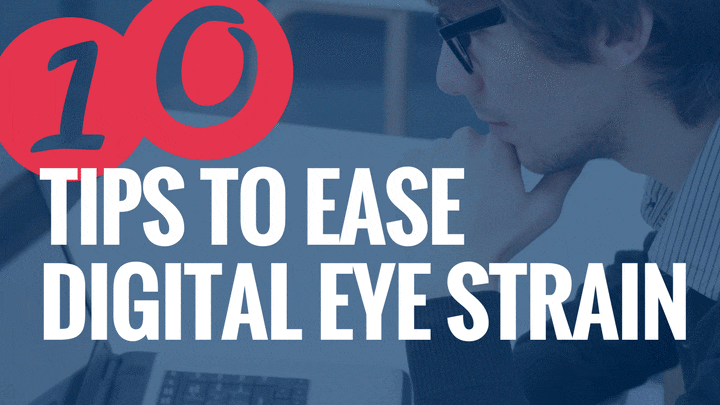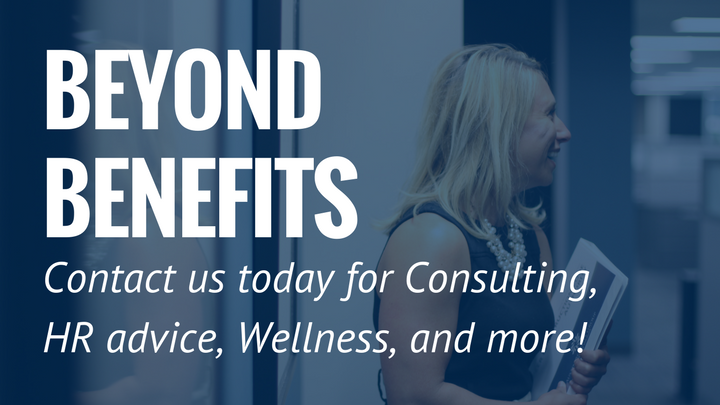Many of your employees are staring at screens all day long. Our technology helps us get a lot of work done, but there can be other side effects too: blurry vision, dry eyes, headaches, and other symptoms. Share these tips with your team to help ease digital eye strain.
Watch Your Distance: When using a computer or laptop, sit about 25 to 28 inches away from the monitor. Position the screen (or screens) so that you are gazing slightly downward towards it. You may also need to adjust your chair – or standing desk if you have one. The goal is to easily read the screen while holding your head and upper body upright. This helps your eyes but also your neck, shoulders, and upper back.
Is the screen too hard to read after making this adjustment? You can change the settings on your computer to display larger so you can sit an adequate distance away from your screens. Ask your office IT for help if you need it!
Windows 10: How to Make Everything Bigger | Mac OS X Make Everything Bigger on My Screen
Avoid Glare: Bright overhead lighting or even sunny, natural light can create annoying reflections on your screen – adding to eye strain or uncomfortable posture. Relieve as much glare as you can by turning off or dimming lights. You can also try anti-glare filters for your computer screen(s).
Check Contrast: If your screen is much brighter than the surrounding lighting – your eyes are working harder to see. You can avoid too much lighting contrast by lowering the surrounding lighting level. If that isn’t possible, you can also adjust the contrast on your screen to your level of comfort.
Remember to Blink: The average person blinks between 15-20 times per minute. However, when using technology, we tend to blink about half that many times in a minute. This causes drying and strain on the eyes. Put a “blink!” reminder post-it in a visible place near your computer screens.
20-20-20 Rule: Give your eyes a 20-second rest every 20 minutes of screen time and try to gaze over 20ft away. You can use alarms or reminders on your calendar to help you get used to the habit. Also, try adding in a complete rest every two hours of screen time – get up and take a quick walk to ease your eyes and your mind.
Go for Glasses: Hours of screen time on a regular basis can dry and irritate your eyes – and this can be worse if you wear contacts. Try alternating wearing your glasses and contacts to help alleviate some of the compounding effects.
YouTube | TechInsider
Put up Your Paper: If you regularly need to reference paperwork, try using a document holder so your eyes can move more naturally. This can also help relieve strain your neck and shoulders!
Eye on Nutrition: Try adding foods with nutrients that are especially helpful for your eyes into your diet more often. Omega-3 fatty acids found in foods like salmon, walnuts, flax, and chia seeds can help with dry, irritated eyes. Also, fruits and veggies (especially dark leafy greens) are always good for overall eye health and general health.
Get Seen: Get your eyes examined on a regular basis. Regular check-ups are often covered by your vision benefits, check with your employer or dedicated Austin Account Director for help with your plan details. Even if you don’t wear glasses now, you may need them as time goes on, regular check-ups can ensure you don’t subject your eyes to unnecessary strain.
Filter Light: Recent research suggests that too much exposure to “blue light” can affect our circadian rhythms and cause long-term damage to your eyes. Sun light is our major source of blue light, but we are also being exposed to much more with our display screens of phones, tablets, computers, televisions, etc. The high-energy and shorter wavelength of blue light essentially creates a scattering of “visual noise” that puts a strain on your eyes.
Just like you wear sunglasses to protect your eyes from the sun, glasses with specially-tinted lenses may increase comfort when you’re viewing digital devices for extended periods of time. Some newer smartphones and other devices can even shift their blue light emittance based on the time of day or other factors.

Help your employees with the effects of digital eye strain by communicating these and other tips on a regular basis. Be sure to include information about the vision benefits your company offers with specific actions and costs to better show the value of your plan. For more ideas about Benefits Communication & Custom Marketing contact the Austin Benefits team today.
Sources:
http://www.allaboutvision.com/cvs/blue-light.htm




